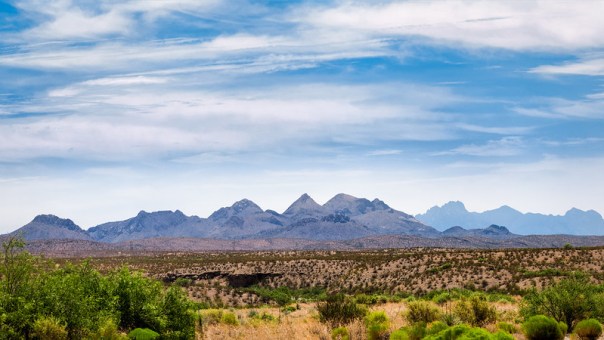It’s been a while since our last trip to Wisconsin to see Mike and Sara (April of 2015!), so Lynn and I were excited to spend a week with them at the beginning of August. We were also quite happy to finally get to meet Avon – who is (probably) a mountain cur that they adopted from a rescue society. He’s a real sweet dog!
I didn’t realize how big of a crop Sunflowers are in Wisconsin. And fortunately for us, the beginning of August is peak bloom time. In fact, Bergsbaken Farms near Cecil Wisconsin was having a Sunflower Fest while we were there so we stopped by.
 Riding in the rain through the sunflower fields
Riding in the rain through the sunflower fields
Even though it was a bit rainy that day, there was still a large crowd and we enjoyed seeing the seemingly endless fields of flowers. We also saw a few strange creatures:
 Strange creature seen in Wisconsin field
Strange creature seen in Wisconsin field
There were several of these tall, happy looking beings along one of the paths through the field. Authorities didn’t respond to questions on where they came from or why they wore sunglasses in the rain. One of my Flickr friends commented: “A nice guy no doubt, but a little seedy, wouldn’t you agree?” Yes, I do agree!
These cultivated sunflowers are different than our wild Florida swamp sunflower variety, which by the way will start blooming in late September or early October.
We had also planned to stop by the Wisconsin State Fair, but the weather forecast was iffy and we didn’t make it – maybe next time! However we did do a few other touristy things in the area.
 Wisconsin Windmill in downtown Little Chute. This is an authentic design, working mill built to celebrate the region’s Dutch heritage (see www.littlechutewindmill.org//)
Wisconsin Windmill in downtown Little Chute. This is an authentic design, working mill built to celebrate the region’s Dutch heritage (see www.littlechutewindmill.org//)
 Lake Winnebago – At High Cliff State Park, Wisconsin; IR, B&W, panorama
Lake Winnebago – At High Cliff State Park, Wisconsin; IR, B&W, panorama
Among other gourmet treats, we also stopped by Wilmar Chocolates for yummy custom chocolate bars (mine had gummy bears in it!).
Our Wisconsin stay was delightful, but ended way too quickly!
You can read other blog posts about Wisconsin at this link: https://edrosack.com/category/photo-ops-categorized-by-place/photo-ops-outside-florida/wisconsin/. And I’ve collected some of my Wisconsin photos in this album on Flickr: https://www.flickr.com/photos/edrosack/albums/72157628253961205
Thanks for stopping by and reading my blog. Now – go spend time with your family. And make some photos too!
©2017, Ed Rosack. All rights reserved















































